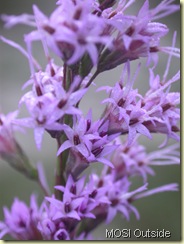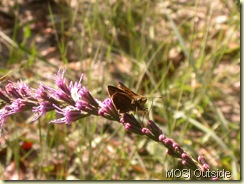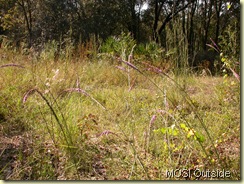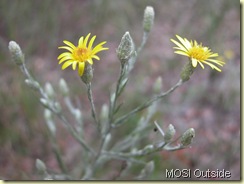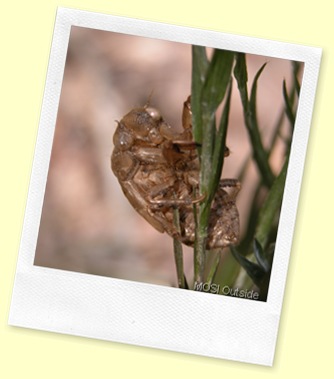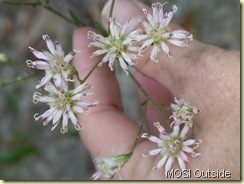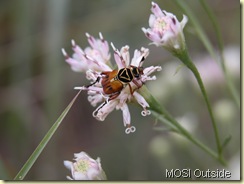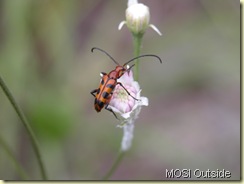Family: Asteraceae
Genus: Liatris
Species: tenuifolia Nutt.
Common: blazing star, gayfeather
Like lavender rockets erupting from the white sands of the sandhill, the lovely blazing star (Liatris tenuifolia) are putting on a serious show this fall. There are many species of Liatris in Florida that are found in many ecosystems from sandhill to wetland. For now we have decided that our most common Liatris sp. in the Back Woods, those that are in the sandhill, are Liatris tenuifolia. This species reach heights of 3 feet or more with vivid pink to purple spikes with many flower heads made up of four or more florets (note the clusters of florets in the picture above). Bees, moths, and butterflies delight in the nectar and pollen of these flowers. You will often see blazing star nodding on breezeless days as hefty pollen laden bumble bees bend the slender spikes toward the ground as they nectar from flower to flower. Of little other wildlife value, the blazing star is a very popular wildflower with the evolved primate crowd and is easily sown from seed.
